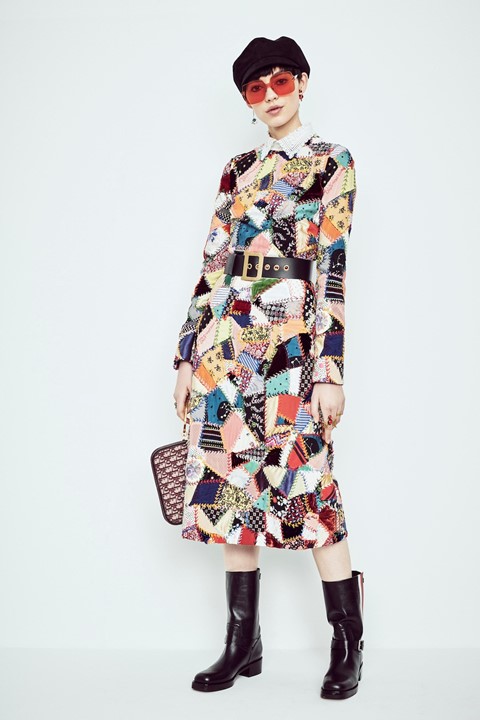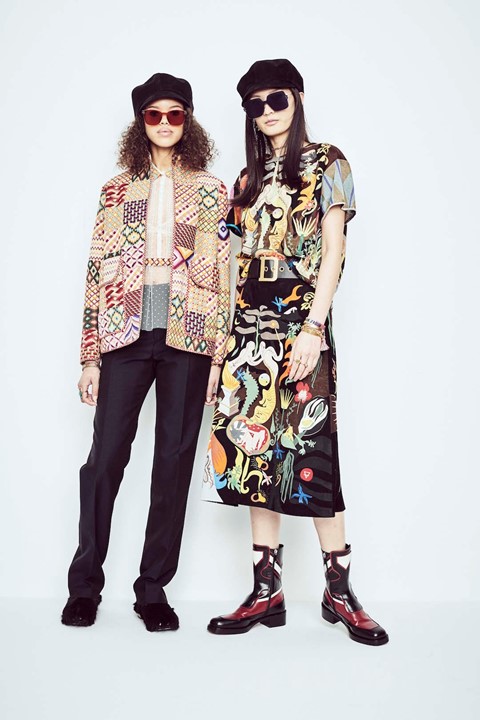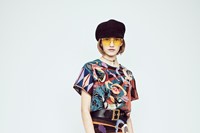Finding inspiration in Rozsika Parker’s feminist text The Subversive Stitch, Maria Grazia Chiuri celebrated the radical power of female craft, from Louise Bourgeois to Tracey Emin
Tracey Emin – mentioned by Dior’s creative director Maria Grazia Chiuri backstage at her A/W18 show – is known for her confessions in cloth. One of her best known works, after the rumpled sheets of 1998’s My Bed, is Everyone I Have Ever Slept With 1963–1995, a tent, appliquéd on the interior with over 100 names and stitched by hand over six months in her cramped flat in Waterloo. Sitting alongside her series of ‘blankets’, patchwork quilts stitched with messages like ‘ROT IN HELL’ and ‘BITCH’, of the same era, it was a fierce testament to the power of embroidery for women’s self-expression and revelation, far away from its domestic roots.
It was in this spirit, though in a very different context, that Chiuri presented her A/W18 collection. Held in the grounds of Paris’ Rodin Museum, attendees were greeted by a space decorated with fragments of printed ephemera from the 1960s, from covers of Vogue to anti-authoritarian posters from the 1968 student protests in Paris, discovered by Chiuri at an exhibition at the National Gallery of Modern Art in her native Rome. Among all that, a very different form of protest – a photograph of the woman protesting outside the Dior store in the 1960s demanding more mini skirts.
It made for a collection that drew upon both this spirit of opposition – Ruth Bell opened the show in a jumper that read “C’est non, non, non et non!”, while ankle-length kilts in red and navy made reference to the uniforms of the 1968 rioters – but also the freewheeling fashions of the 1960s more generally. Stephen Jones provided suede baker boy caps, peace signs abounded and crochet shift dresses and enveloping shearlings drew parallels to the free love movement. An ode to embroidery, too – jackets, skirts and handbags were haphazardly patchworked with clashing archive Dior prints, a luxurious take on the naive quilt.

On this season’s moodboard was the cover sleeve of Rozsika Parker’s The Subversive Stitch: Embroidery and the Making of the Feminine, the 1984 feminist text that propositioned a paradox: in the 19th century, embroidery marked women‘s entrapment in the domestic sphere, yet simultaneously allowed them a creative outlet and, more importantly, an uninterrupted space for thought. In the book, Parker evokes the early 20th-century French novelist Colette’s reminiscence of watching her daughter embroider. “She is silent when she sews,” she writes. “She is silent, and she – why not write down the word that frightens me – she is thinking.”
Since then, the act of sewing has been used more explicitly by women – like Emin, her forebear Louise Bourgeois, both of whom Chiuri referenced backstage, and the many female textile artists before and after – to untangle memories and desires. Outside of art, it has been used as a means of protest in itself. The visual impact of the Cleves Jones’ 1987 AIDs quilt, where each hand-stitched 3 x 6” panel, the size of a human grave, represented a person lost to the disease, stretched across Washington’s Mall to raise awareness, is still enough to take your breath away. In our current era, a new form of protest in this vein, ‘craftivism’ – the act of creation as ‘gentle’ activism – is perhaps best demonstrated by the hand-knitted “pussy” hats, a symbolic opposition to Donald Trump at the Women’s Marches across the USA, and world.

None of this would be lost on Chiuri, who has used her role as the first female creative director at Dior to champion the rights of women, and to shed light on the women artists and muses who inspired the designers at the house before her. But embroidery is also in Chiuri’s blood. Her mother was a seamstress, and her roots are in the region of Puglia, the heel of Italy’s boot, where for centuries women have passed down handmade lace tablerunners from mother to daughter, across generations. Personal, intimate, revealing – Chiuri’s latest was an ode to female craftsmanship, and the subversive potential it holds.






